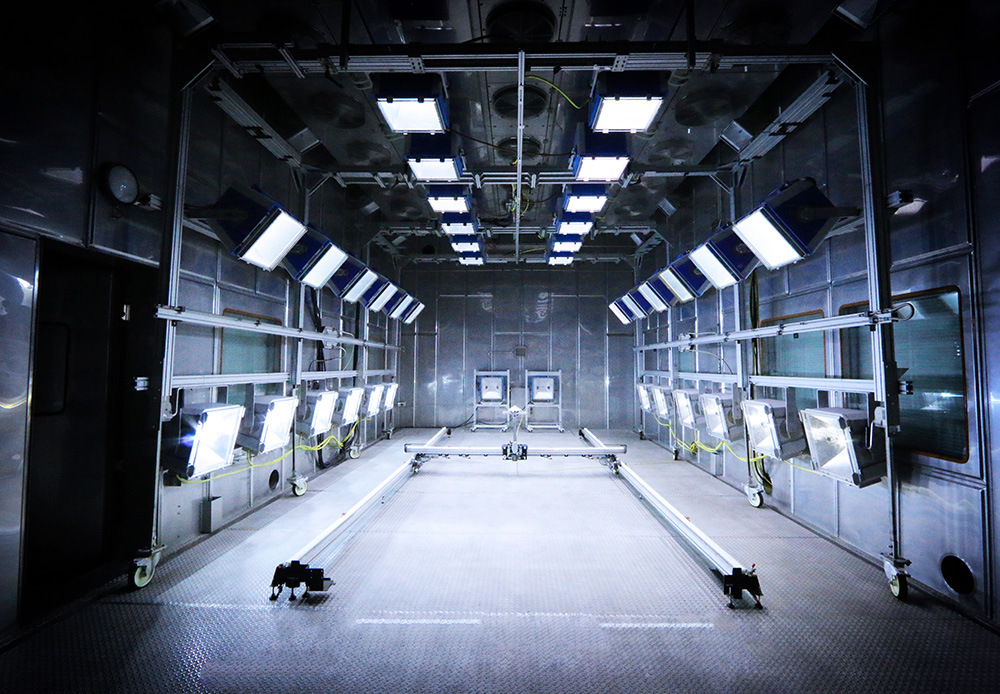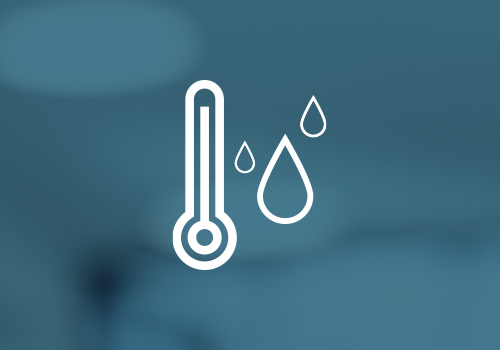

Think globally, act locally: A Climatic world tour with us on site - environmental simulation testing for vehicles, equipment and materials.
With state-of-the-art technology, analytical expertise and decades of experience, we validate the reliability and service life of prototypes in accordance with international testing standards.
Our services:
Climate chamber testing
Simulate extreme conditions in rotation to test components for reliability. From heating up to cooling down phases - with a temperature coefficient of up to 6 K.
Corrosion tests
Under realistic conditions, we test the resistance of components to corrosive atmospheres and humidity.
Solar simulation
We simulate climate aging by irradiation of 1000 W/m² and test the influence of UVA and UVB radiation on component properties.
In the Bertrandt lab, climatic chambers can be used to simulate various climatic conditions ranging from -80 °C to +300 °C. These tests allow the aging of vehicles and components to be mapped, even in the accelerated equatorial aging cycle. Salt spray chambers test resistance to coastal climates and road salt. Thermal shock chambers generate rapid temperature changes to study material reactions. In addition, altitude chambers are available to simulate different air pressure and altitude situations.
Browse through our services and order your tests directly online!
Testing the resistance of markings and inscriptions on parts of electrotechnical products such as switches, plugs or levers to abrasion caused by wiping with fingers and hands. External Test
Test to determine resistance to sudden temperature changes. The test specimens are subjected to abruptly changing temperature conditions.
Climate change test to assess the durability of materials against climatic environmental influences. This test involves the exposure of test specimens to changing temperature and humidity phases. The aim is to observe and evaluate the ageing effects on the test specimens to ensure that they meet the requirements for long-term durability under different climatic conditions.
Test to determine the ability of specimens to withstand repeated cycles of high and low temperatures. During testing, specimens are subjected to rapid and controlled temperature cycling. To evaluate the reliability and performance of materials, components, and products subjected to significant temperature changes during their service life.
Testing of resistance of vehicle paintwork and vehicle add-on parts (e.g. corrosion, peeling or deterioration of the surface finish) to high humidity. Additionally: before/after the test:2xgrid section test according to AA-0180
Test to determine the resistance and impermeability of materials or components under combined conditions of humidity and temperature changes. This involves exposing the test specimen to alternating high humidity and temperature, followed by low humidity and temperature. This test simulates the effects of ambient humidity and thermal stress on the test specimen to evaluate its reliability and durability.
In this test, the equipment or components are exposed to a specific combination of high humidity (air or steam) and constant temperature for an extended period of time. The purpose is to simulate the conditions that prevail in tropical or humid regions or when operating equipment in enclosed spaces with limited ventilation.
Testing the resistance of surfaces of automotive interior materials (painted, coated, uncoated and laminated surfaces) to determine the resistance to objects causing writing marks and to determine the suitability of a material. Test force is increased in stages (1 N, 3 N, 5 N, 8 N,10 N,12 N,15 N, 20 N).External Test
Test to evaluate the resistance of automotive components to repeated mechanical impacts that can occur during vehicle operation, such as opening and closing doors or flaps. It simulates the load to which the components are exposed over a longer period of time and serves as a safeguard against potential damage such as component failure and material fatigue. Components to be tested: Driver's door, passenger & rear hatches, tailgate/door, hood
Test to evaluate the resistance of automotive components to repeated mechanical impacts that can occur during vehicle operation, such as opening and closing doors or flaps. It simulates the load to which the components are exposed over a longer period of time and serves as a safeguard against potential damage such as component failure and material fatigue. Components to be tested: Driver's door, passenger & rear hatches, tailgate/door, hood
Test to evaluate the resistance of automotive components to repeated mechanical impacts that can occur during vehicle operation, such as opening and closing doors or flaps. It simulates the load to which the components are exposed over a longer period of time and serves as a safeguard against potential damage such as component failure and material fatigue. Components to be tested: Driver's door, passenger & rear hatches, tailgate/door, hood
Test for evaluating the reliability of electronic components at maximum temperatures relevant to operation. In this process, the test specimens are exposed to elevated temperatures to simulate durability over the service life. Monitoring parameters such as temperature are used to evaluate performance. These tests serve as the basis for material durability.




